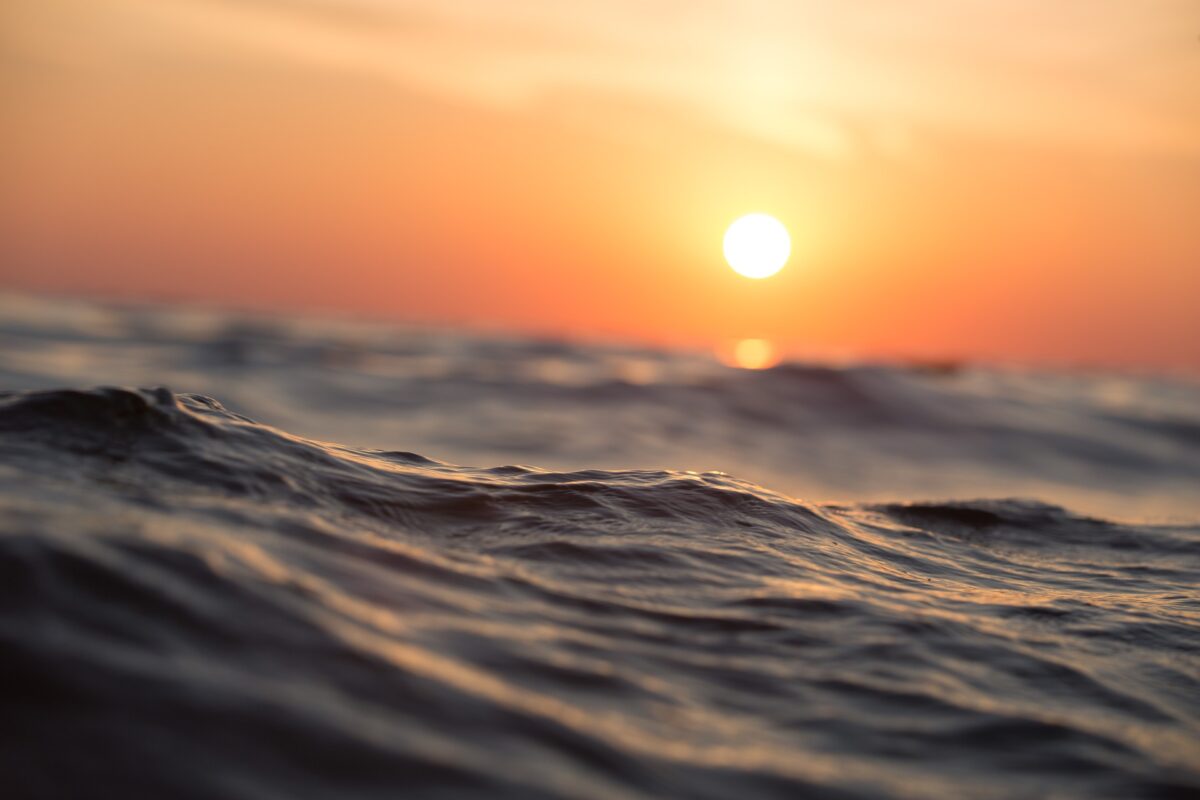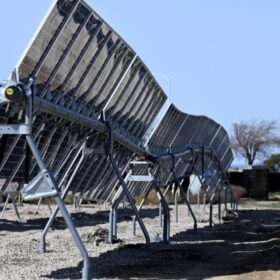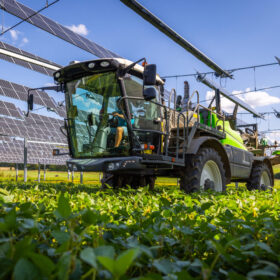A research team from China has developed a novel floating box array for offshore floating PV (FPV).
A large, irregular, random wave flume was used to measure surge and heave accelerations, along with the response amplitude operator (RAO) for heave and pitch. A floating box, in this research context, is a buoyant structural unit that supports PV panels on top of it.
“Although the application of box-based FPV structures in marine environments is still in its early stages, their future prospects are promising,” the research group said. “A novel floating box-based FPV structure, optimized for marine conditions, was designed based on standard floating box configurations and engineering practices. The hydrodynamic response characteristics of this new structure were systematically investigated through physical model testing.”
The team’s design is made out of an array of 9 x 11 floating boxes. A geometric scale ratio of 1:14 was adopted for testing within a 90 m × 2 m × 2 m wave flume. The 9 ×11 floating box array had a width of 1.74 m and a length of 2.2 m, corresponding to a prototype installed capacity of approximately 118 kW.
A full-scale deployment would have used a horizontal distance from the anchor point to the floating box array of 5 m and a mooring line length of 11.5 m. A solid block was used in the experiment, while the internal compartmentalized structure of the floating box was disregarded.
Wireless gyroscopes were attached to three floating boxes along the wave propagation path in the central row of the floating box array, representing the front (T1), middle (T2), and rear (T3) positions.
The array was tested under regular wave tests, with wave heights of either 4 cm or 8 cm, while the irregular wave tests were performed using the JONSWAP spectrum for 1-year and 50-year return periods. A return period of 1 year represents a normal sea, where waves of a specific size happen once a year, while a 50-year return period represents an extreme storm that occurs only once every five decades.
The tests showed that the floating box array exhibited location-dependent RAO characteristics, with the scientists finding that, in wave-affected regions, both acceleration and dip angle responses decrease with increasing wave period, while in non-wave-affected regions combined effects of wave excitation and adjacent boxes cause a non-monotonic response trend.
“The floating box array behaves as a viscoelastic floating flexible structure (VFFS), with the elastic deformation closely following the wave surface. Increased wave height or shorter wavelengths induce more violent elastic responses, causing compression and detachment,” they explained.
They also found that, under irregular waves, the array shows phase-lagged responses with notable spatial differences. The response patterns under both 1-year and 50-year return periods were also found to be alike, with the response increase not being proportional to the wave height. It was also found that the shielding effect of the structure reduces pitch angles along the wave direction, and the average tilt remains low enough to retain over 99.5% solar efficiency.
“Wave overtopping intensifies with return period and wave height, with the value of 1.527/min for the fifty-year return period. The affected area of wave overtopping is approximately proportional to the significant wave height,” the researchers noted. “Additionally, significant wave overtopping through the structural openings in the floating boxes was observed, further validating the design concept of gap-free connections in the novel floating-box array.”
Their findings appeared in “Experimental study on hydrodynamic response characteristics of a novel floating box array offshore floating photovoltaic structure,” published in Renewable Energy. Scientists from China Renewable Energy Engineering Institute, China’s Tianjin University, Tianjin University of Technology, and Hebei University of Engineering have participated in the study.
This content is protected by copyright and may not be reused. If you want to cooperate with us and would like to reuse some of our content, please contact: editors@pv-magazine.com.








By submitting this form you agree to pv magazine using your data for the purposes of publishing your comment.
Your personal data will only be disclosed or otherwise transmitted to third parties for the purposes of spam filtering or if this is necessary for technical maintenance of the website. Any other transfer to third parties will not take place unless this is justified on the basis of applicable data protection regulations or if pv magazine is legally obliged to do so.
You may revoke this consent at any time with effect for the future, in which case your personal data will be deleted immediately. Otherwise, your data will be deleted if pv magazine has processed your request or the purpose of data storage is fulfilled.
Further information on data privacy can be found in our Data Protection Policy.